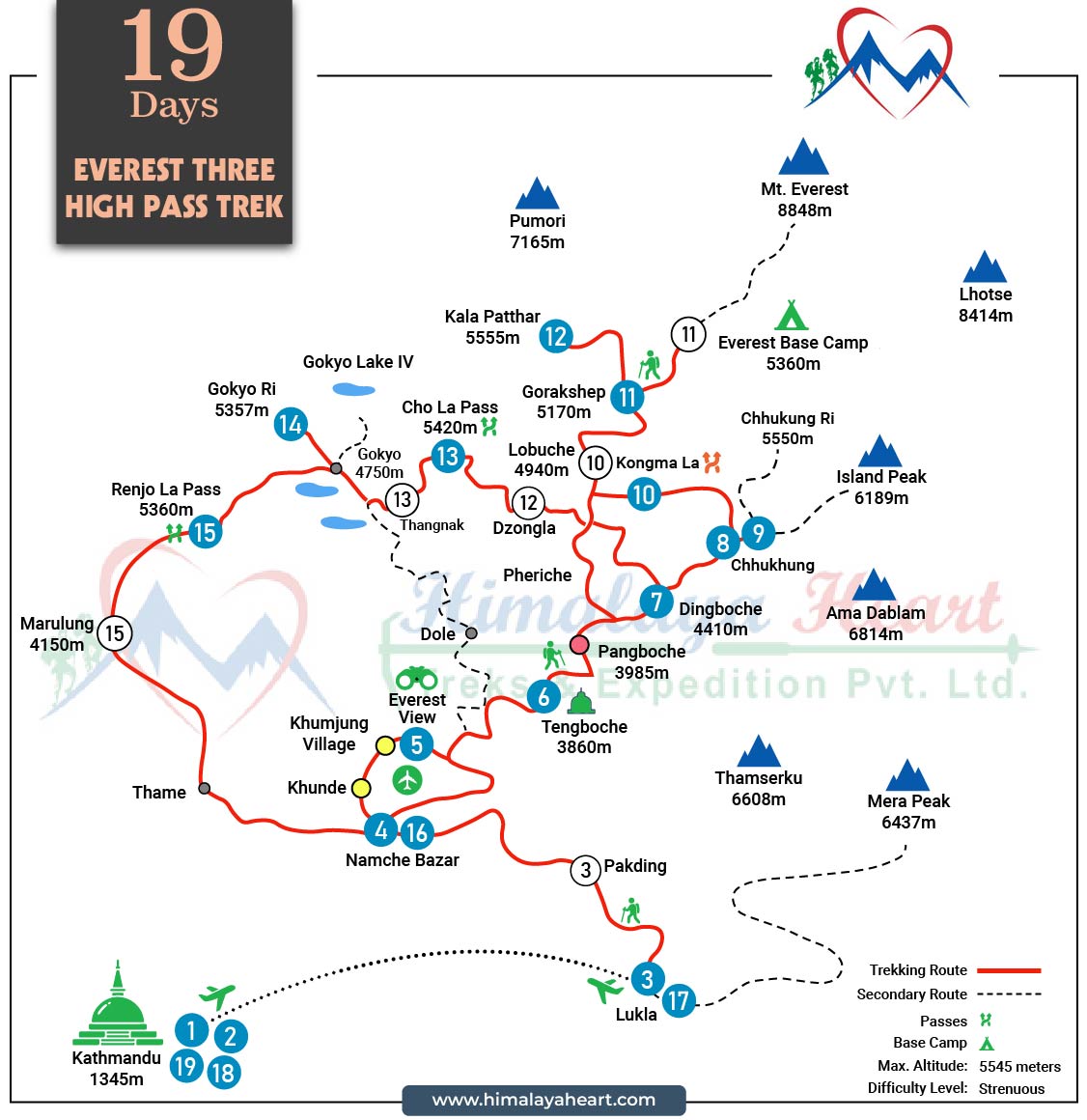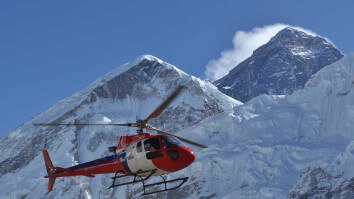The Everest Region is the premier trekking destination in Nepal. The Everest Base Camp Three Passes Trek is rated as its ultimate trekking adventure in the world’s most spectacular mountain terrain. The Everest Base Camp Three Passes Trek trail takes you off the beaten path, through remote valleys, and over high passes, with breathtaking scenery at every turn.
As defined by its name, the Everest Base Camp Three Passes Trek will take you across three challenging passes over 5,000 meters, namely Renjo La (5,360 m.) and Cho La (5,330 m.), and Kongma La (5,540 m.), each offering amazing scenery and views.
The trek links both the Everest Base Camp Trek and Gokyo Valley Trek with two additional trails to the east and west of the region. Acclimatization is essential for the three long and demanding pass trekking days, which include slow and steady ascents.This trek is ranked by many hardened trekkers as the best trek in Nepal.
Best Time for Everest Base Camp Three Passes Trek
Spring (March–May) and autumn (October–November) are the best seasons to do the Everest Base Camp Three Passes Trek.
It is possible to do in the monsoon season (June–early September), but the weather is less predictable. Some people, however, still choose this time as it fits better with their vacation schedule.
The winter season (December–February) is quite cold, and there is a good possibility that snow may block the passes, but often it offers clear skies. We rate this trek as "challenging to strenuous," meaning you need to be fit and resilient given its high pass crossings.
It is much more challenging than a Everest Base Camp Trek but not quite as challenging as summiting a trekking peak such as Island Peak Climbing or Mera Peak Climbing.
Itinerary Variations for the Everest Base Camp Three High Passes Trek
Himalaya Heart Treks chooses to do the Everest Base Camp Three Passes Trek anti-clockwise. It is possible to trek clockwise, but due to the steep altitude gain of crossing the Renjo La, it is not recommended. From Gokyo, we add an extra day to visit the remote Gokyo Lakes farther up the glacial valley.
We provide a complete support for you all the way. Our mountain guides have spent many years leading groups at high altitude and are well able to deal with any problems. Our team is always well prepared, and we provide our porters and support staff with excellent equipment for travel into the mountains.
Your trip leader will be paying careful attention to all clients and staff, making sure everyone stays as comfortable as possible and has the best chance of attaining their goals and completing the trip successfully.
Delays with Lukla Flights
The delay in the flight to and from Lukla can happen any time of year, but are especially likely around monsoon season (late May to early September). If your flight is delayed, we will reschedule you on the next possible flight. As conditions can change rapidly, this may be very soon after your scheduled departure, or on very rare occasions, it may be as much as a few days later.
It is very difficult to predict the weather in the mountains. This can be pretty frustrating, but it is simply part of the journey to the Everest region. We strongly recommend you add at least a day or two to the end of your trip if you have an international connecting flight, to give yourself some flexibility in the case of any delays.
Everest Base Camp Three High Passes Trekking Highlights
- Sightseeing tour around Kathmandu
- Trek the entire Everest region on a difficult circuit.
- Amazing views of the highest mountains in the world
- Cross three challenging 5,000-meter passes: Renjo La, Cho La, and Kongma La.
- Leave the crowds on the major routes for a much more personal experience.
- Sherpa Mountain Culture









 USD 1430
USD 1430










